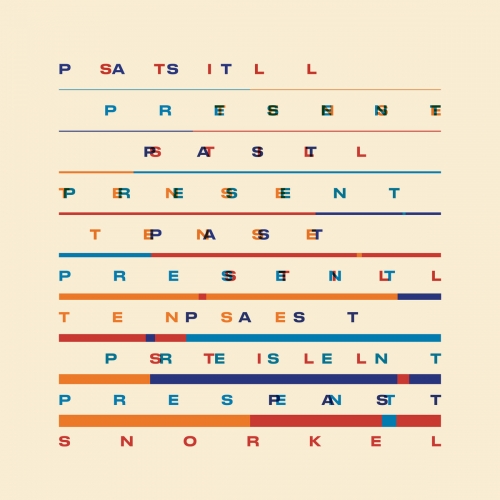Arte dei Suonatori, Martin Gester - Georg Philipp Telemann - Ouvertures pittoresques (2012) Hi-Res

Artist: Arte dei Suonatori, Martin Gester
Title: Georg Philipp Telemann - Ouvertures pittoresques
Year Of Release: 2012
Label: BIS
Genre: Classical
Quality: FLAC 24bit-44.1kHz / FLAC (tracks) / Mp3 320 kbps
Total Time: 01:17:12
Total Size: 874 / 446 / 202 Mb
WebSite: Album Preview
Tracklist: Title: Georg Philipp Telemann - Ouvertures pittoresques
Year Of Release: 2012
Label: BIS
Genre: Classical
Quality: FLAC 24bit-44.1kHz / FLAC (tracks) / Mp3 320 kbps
Total Time: 01:17:12
Total Size: 874 / 446 / 202 Mb
WebSite: Album Preview
Georg Philipp Telemann (1681–1767)
[1]-[8] Ouverture in D major, TWV 55:D15
for three oboes, strings and basso continuo
[9]-[16] Ouverture in B flat major, TWV 55:B5 (‘Völker-Ouvertüre’)
for strings and basso continuo
[17]-[20] Concerto polonois in B flat major, TWV 43:B3
for strings and basso continuo
[21]-[24] Concerto polonois in G major, TWV 43:G7
for strings and basso continuo
[25]-[31] Ouverture, jointes d’une Suite tragi-comique in D major, TWV 55:D22
for three trumpets, timpani, strings and basso continuo
Performers:
Arte dei Suonatori
directed by Martin Gester
A new collection of Telemann overtures or overture-suites might not seem a notable development on the face of it, but this one from the Polish historical-instrument group Arte dei Suonatori under Martin Gester breaks new ground. The subtitle "ouvertures pittoresques" doesn't quite cover what's happening. There is a pair of French suites in the classic manner, with an overture and dances. The first one, the Ouverture in D major, TWV 55:D15, has an unusually jocular movement titled "Harlequinade," but is otherwise unremarkable. The final Ouverture, jointes d'une suite tragi-comique in D major, TWV 55:D22, whose title shows how Telemann conceived of the overture and the suite as distinct components, has such novelties as a movement called "L'hypocondre" and another called "Le Petit Maître." But the rest of the pieces are even more unusual; they're not just "pittoresques," but downright exotic. It may be that these Polish musicians were attracted specifically by Telemann's music in Eastern European styles. At any rate, there isn't another album that brings so much of it together. The two pieces titled Concerto polonois (Polish Concerto) by Telemann were, according to the composer himself, his attempt to render Polish folk music "in Italian garb." They are full of drones, odd chromatic turns of phrase, and percussive rhythms. Musical exoticism really began with pieces like these, which testify to Telemann's status as one of the great innovators. The Ouverture in B flat major, TWV 55:B5, later dubbed the Völker-Ouvertüre or Overture of the Peoples, is a suite that attempts to depict various national styles before breaking off and concluding with two movements titled "Les Boiteux" (The Hobblers) and "Les Coureurs" (The Runners). The "Les Moscovites" movement was apparently inspired by accounts of church bells in Moscow, while "Les Turcs" was the forerunner of a large number of quasi-military Turkish movements. The national characteristics of "Les Suisses" and "Les Portugais" may be more difficult to divine at this remove, but the whole thing offers a unique opportunity to hear through 18th-century ears, and the players render it with lightness and enthusiasm. They are easily the equal of western European early music ensembles. BIS' sound engineering, accomplished at a small Polish parish church, avoids the pitfalls of using churches for secular music; the orchestra sounds quite clear.




![Yasuhiro Usui, Ryoko Ono and Taro Tatsumaki - The House Concert Live Collection, Vol. 55: Yasuhiro Usui (Live at 3rd Floor, Artist House, Daehak-ro, Seoul, 7/12/2015) (2025) [Hi-Res] Yasuhiro Usui, Ryoko Ono and Taro Tatsumaki - The House Concert Live Collection, Vol. 55: Yasuhiro Usui (Live at 3rd Floor, Artist House, Daehak-ro, Seoul, 7/12/2015) (2025) [Hi-Res]](https://www.dibpic.com/uploads/posts/2025-12/1765791289_rchn1y2nh7yfb_600.jpg)
![Tomasz Stańko - Unit (Polish Radio Sessions vol. 2/6) (2025) [Hi-Res] Tomasz Stańko - Unit (Polish Radio Sessions vol. 2/6) (2025) [Hi-Res]](https://www.dibpic.com/uploads/posts/2025-12/1765790300_cover.jpg)


